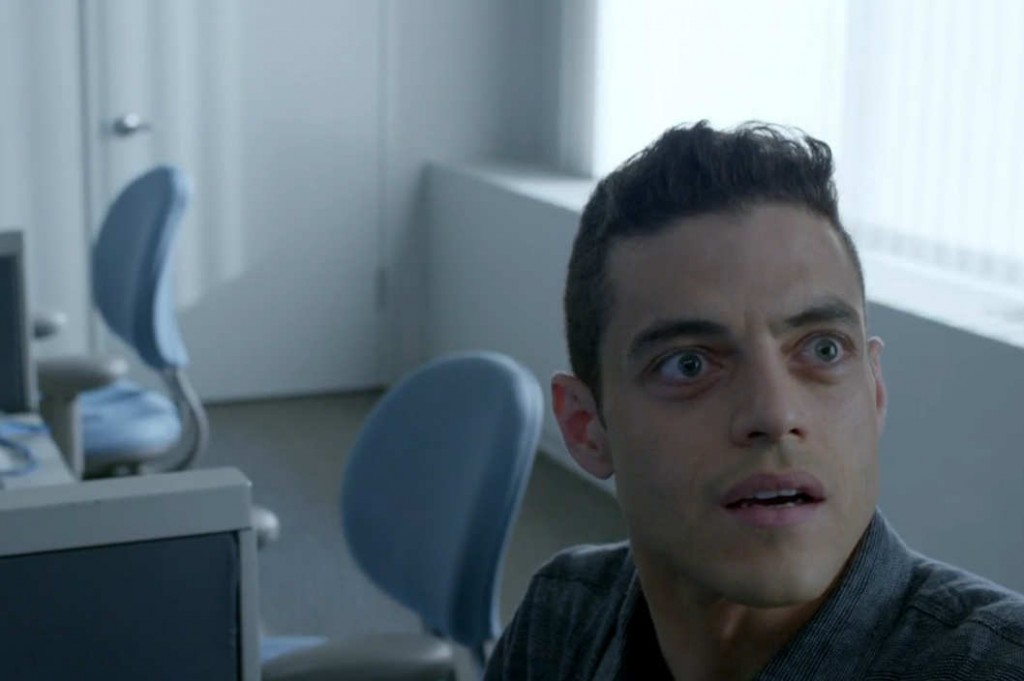Posts Tagged ‘mr. robot’
Command/Control: How Mr. Robot’s Creator Took the Reins of Season Two
July 7, 2016On the overcast May morning when I meet Esmail at a Bed-Stuy basketball court where Mr. Robot is shooting, he seems very real indeed. At 6’ 4″, Esmail stands a head higher than star Rami Malek or cinematographer Tod Campbell. Until the basketball-playing extras show up, he’s the tallest person in the playground — his black-rimmed glasses and air of stubbly, slightly artsy dishevelment make him look like an overgrown film student. He wears a Canada Goose coat far bulkier than anything else being sported on the temperate late-spring morning, which adds to his imposing figure as he buzzes around the location. “He’s a presence,” says a network rep watching him work in the same awestruck tone I’d heard from the cast.
When he speaks loudly, his voice turns into a booming baritone. “LET’S DO THAT ONE MORE TIME,” he bellows from the director’s chair halfway across the playground, as Malek, Christian Slater, and newcomer Craig Robinson — plus a canine co-star who’s proving somewhat difficult to wrangle — run their lines. “GREAT!” Esmail says after the take is completed, before he grins and adds “I’M TALKING TO THE DOG.”
“He’ll definitely yell at us all the time,” Doubleday tells me. “You’ll hear a resounding ‘CARLY!’ or ‘PORTIA!’ or ‘NO, RAMI!’” But the actor insists he’s neither a dictator nor a disciplinarian. “He just knows us so well,” says Doubleday. “He’s said so many times, ‘You guys know these characters better than I do. I don’t know if you’ll have a better idea than me, so bring it to the table and we’ll see if it works.’ If he likes it, it sticks. If he doesn’t, then I trust that it wasn’t right for the moment, because he’s seeing the entire world.”
I profiled Sam Esmail and his show Mr. Robot for my debut at The Verge. A lot of work went into this one on all sides and really I hope you enjoy it.
The 25 Most Anticipated TV Shows of 2016
February 8, 2016Game of Thrones (HBO, April 24)
The cable network’s dark-fantasy juggernaut has left a long trail of dead characters and shocked audiences in its wake, though readers of George R.R. Martin’s books always knew when to duck. All that changes when the show returns for its sixth season this year — because The Winds of Winter appears to have hit the proverbial Wall, showrunners David Benioff and Dan Weiss have been free to plan their own red weddings this season. While the show will continue to be based at least in part on future plans revealed to creators by Martin, it had already begun deviating from the source with increasing regularity and boldness. (Is Jon Snow alive or dead? Who the hell knows?) Look for an even stormier winter than usual.
How “Mr. Robot” Became One of TV’s Most Visually Striking Shows
September 2, 2015Fitting for a show about those occupying society’s technological substrata,Mr. Robot’s characters are often placed at the very bottom of the frame. This leaves massive amounts of headroom that suggests a great weight hanging over their heads, and echoes their isolation: When they’re talking right to each other, they seem alone. In more conventional filmmaking, conversations are cut with the characters looking at each other from opposite ends of the frame, leaving what’s known as “leading room” between their faces that helps convey the physical space they occupy. Mr. Robot inverses the norm by “shortsighting” the characters, positioning their faces at the edge of the frame closest toward the person to whom they’re speaking.
“Shortsighting is unnerving,” Campbell explains. “It further accentuates how fucked-up Elliot’s world is. The idea was to convey the loneliness. That’s the internal dialogue I had with myself: How do we tell that story? How do you get Elliot across?”
The effect goes a long way in selling audiences on the mounting paranoia and dissociation of the show’s main character, hacker Elliot Alderson (Malek). Without the usual pattern to help us intuit spatial relationships, these scenes create the sense that the characters don’t know where they stand in relation to one another. They also remind us of the picture-in-picture, face-against-flat-surface nature of video chatting, which can’t be overlooked on a show this attuned to the alienating effects of technology.
I spoke with Mr. Robot’s director of photography, Tod Campbell, about the show’s gorgeous shot compositions for Vulture. It felt great to write an article about television that focused on pure form. Woo!

